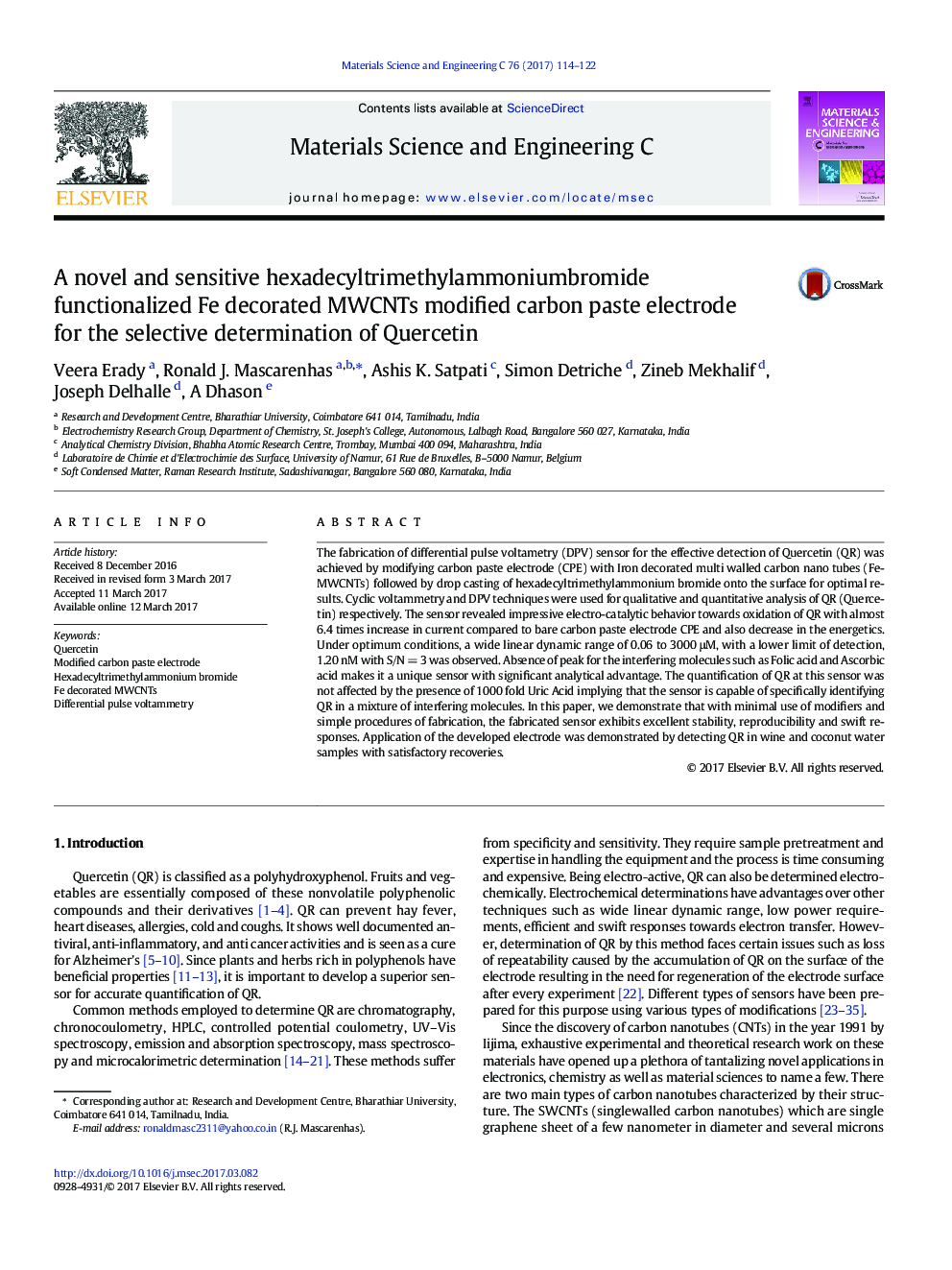| کد مقاله | کد نشریه | سال انتشار | مقاله انگلیسی | نسخه تمام متن |
|---|---|---|---|---|
| 5435099 | 1509145 | 2017 | 9 صفحه PDF | دانلود رایگان |

- Impressive electro-catalytic behavior towards oxidation of Quercetin at CTAB over Fe-decorated MWCNTs/CPE.
- Complete elimination of peaks due to Folic acid and Ascorbic acid makes it a unique sensor.
- Highly sensitive method for the nano level quantification of Quercetin by DPV.
- Successful application of the sensor for the determination Quercetin in wine and coconut water.
- Higher activation energy needed for the oxidation of interferent Uric Acid at this sensor
The fabrication of differential pulse voltametry (DPV) sensor for the effective detection of Quercetin (QR) was achieved by modifying carbon paste electrode (CPE) with Iron decorated multi walled carbon nano tubes (Fe-MWCNTs) followed by drop casting of hexadecyltrimethylammonium bromide onto the surface for optimal results. Cyclic voltammetry and DPV techniques were used for qualitative and quantitative analysis of QR (Quercetin) respectively. The sensor revealed impressive electro-catalytic behavior towards oxidation of QR with almost 6.4 times increase in current compared to bare carbon paste electrode CPE and also decrease in the energetics. Under optimum conditions, a wide linear dynamic range of 0.06 to 3000 μM, with a lower limit of detection, 1.20 nM with S/N = 3 was observed. Absence of peak for the interfering molecules such as Folic acid and Ascorbic acid makes it a unique sensor with significant analytical advantage. The quantification of QR at this sensor was not affected by the presence of 1000 fold Uric Acid implying that the sensor is capable of specifically identifying QR in a mixture of interfering molecules. In this paper, we demonstrate that with minimal use of modifiers and simple procedures of fabrication, the fabricated sensor exhibits excellent stability, reproducibility and swift responses. Application of the developed electrode was demonstrated by detecting QR in wine and coconut water samples with satisfactory recoveries.
147
Journal: Materials Science and Engineering: C - Volume 76, 1 July 2017, Pages 114-122